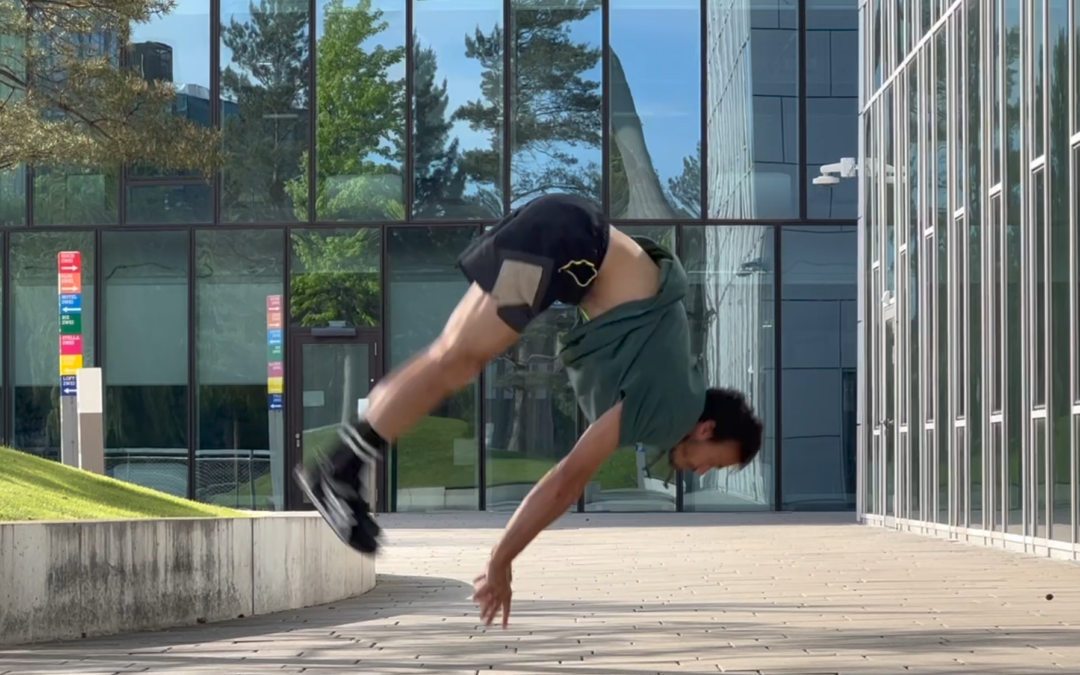A kip is a quick wave-like impulse that utilizes the elastic response of the fascia to generate a sudden acceleration in the body. In detail, it is produced by a concert of actions that occur in fast succession, and involve a kick, followed by a change of the convex/concave shape of the torso. If the motion is performed correctly the body is pulled up as per an invisible sling in the direction of the chosen trajectory of motion.
Notice: the stretch alone will not produce any elastic return, however, if the elongation happens against the firm resistance of the active components of the tissues, then a stretch shortening cycle will be produced and the shape recoiled.
The nervous system has a certain degree of resistance to this mechanism and as it senses a strong stretch it will inhibit action. The only way around this problem is to practice consistently on the edge of your elastic capacities. No “strength or mobility training” will get you there alone. Specific time should be allocated in nurturing this capability of the body.
Since kips are at the base of any acrobatic manoeuvre, here’s a protocol to get you started:
Kip protocol
A. Manna kip
Dive back into a manna, pushing your hips as high as possible in line with the shoulders or beyond. Use the elastic response of the rear fascia, running behind the stretched back to the hyperextended arms to bounce you forward. Land in a reverse hinge and in control.
Before going for the full variation make sure these two are addressed, otherwise, start here:
Regression 1 (easier): Table to sissy up
Regression 2 (harder): Manna kip to table to sissy up
Goal. Showing correct chambering of the legs over the vertical hyperextended arms, sharp slingshot, and light exit in a reverse hinge.
B. Handstand back entry kip
Gather your legs to the chest as you roll on your back, then explode upwards into a handstand. Use the coiling-uncoiling of the back fascia to push you upwards and careful not to distort the shape as you push yourself up. Maintain a semi vertical and clear trajectory. Before going for the full variation make sure these two are addressed, otherwise, start here:
Regression 1 (easier): headstand to handstand kip
Regression 2 (harder): back roll to handstand
Goal. Reach out to the handstand with a sharp trajectory and clean gestures.
Perform a side cartwheel. As you are 1/3 in the motion, load the inner slings of your back leg, the side of the torso and slightly bend your arms. Release the spring upwards in a semicircular trajectory. Land with both feet together and in control. Before going for the full variation make sure these two are addressed, otherwise, start here:
Regression 1 (easier): Cartwheel quick side raise
Regression 2 (harder): Cartwheel double hop
Goal. Show clear understanding of the side kip mechanics, and hip to head catenary behavior.
D. Lying kip
Gather your legs to the chest as you roll on your back, then explode upwards into an arch. Quickly gather yourself back together as you maintain a lengthening sensation across the system. The concave to convex motion is what makes the magic. Before going for the full variation make sure these two are addressed, otherwise, start here:
Regression 1 (easier): Lying to bridge to standing
Regression 2 (harder): Lying kip to squat – one arm assist
Goal. Perform the kip up with trained explosive expertise and reach a standing posture without ever closing the hips once opened.
E. Handstand kip
Kick up into a handstand. From there arch your back and load your front fascial line. To do so, it is not enough to stretch it, but the elongation should be resisted with a strong contraction. Suddenly release the sling explosively to then shoot yourself back towards a standing position. Notice how the chance between convex to concave is the engine of the motion and there is no axial kicking involved in it.
Before going for the full variation make sure these two are addressed, otherwise, start here:
Regression 1 (easier): Push up kip
Regression 2 (harder): Worm kip
Goal. Replace the hands with the feet (or beyond) in every repetition.
Here’s the visual references to the exercises:
That, it for today. Wish you elasticity in choices, body and life!
Until next time,
Marcello.


Recent Comments